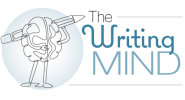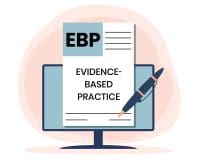Have you ever had someone not respond to your email? Or fail to respond for days on end? Or not answer your question in their response? Have you ever hit “reply all” instead of “reply,” resulting in an embarrassing situation?
These are just a few examples of where emails can go astray. These types of problems have only escalated with the pandemic as we rely more and more on electronic communication such as text, emails, and video calls.
In her book, Digital Body Language: How to Build Trust & Connection, No Matter the Distance, Erica Dhawan points out that digital communication frequently robs us of the ability to read each other’s body language. That leaves us with few clues other than words for interpreting someone’s meaning. In the case of email, that means no smiles, frowns, or puzzled looks—at least no human ones. Emojis can help fill in the gaps, and have become increasingly accepted in business correspondence.
But you can do more than insert a smiley face to improve the effectiveness of your email. Here are a few tips from Dhawan’s book—and from common sense.
Send to the right people
Who needs the information in this message? Who needs to be copied on the email so they’re in the loop? Avoid over-copying people and filling up in-boxes with unnecessary emails.
The blind copy feature (BCC) is for those you want to see the email, but you don’t want the recipient to know they will see it. Personally, I’ve always felt BCC to be a bit sneaky and never use it. Isn’t it better to be transparent about our communications? However, I admit that the feature can sometimes be handy. For example, perhaps you’re a new leader who wants to keep your supervisor in the loop, but doesn’t want the recipient to feel you are escalating the conversation to another leadership level.
Choose the right priority
You likely know someone who overuses the priority setting on email, implying that everything they have to communicate is of the utmost importance. If you do this, you run the risk of becoming the boy who cried wolf once too often, and people will tune you out. Ask yourself, “Is this truly a priority or is it that I want to know the answer so I can complete my task or project sooner?” If it’s truly a priority, telling the person why will make it more likely they’ll respond quickly. For example, “The deadline for next year’s budget got moved a week earlier.”
Start strong
Spell people’s names correctly and use their correct titles. This sounds obvious, but I frequently receive emails from potential authors addressed to “Dr. Savor” (The name is Saver, and I’m not a “doctor” as a quick Google search would reveal) or “Cyndi” instead of “Cindy” or “Cynthia.” Pay attention to people’s preferred names. For instance, if they use “Jen” rather than “Jennifer” in their email, use Jen in return.
Keep your subject line succinct, but useful. For example, “Magnet application” doesn’t provide much information, but “Magnet application for final review, deadline 11/21” lets the recipient know more precisely what is attached and what they need to do. Dhawan recommends avoiding subject lines that could produce anxiety such as “Please call me ASAP.”
Dhawan also says to skip questions such as “How’s your day?” and get to the point. I think that depends on the situation and your connection with the person. I work with authors and peer reviewers with whom I don’t correspond on a regular basis, so I like to start with something more warm, even if it’s simply, “I hope you had a great weekend.” Or, I’ll try to connect on a human level. For instance, if in the last email, the recipient mentioned a new grandchild, I’ll ask how the grandchild is doing.
My rationale is that when we talk with someone in person, we don’t immediately say, “I wanted to check on the report” without first saying something like, “Hey, how’s your day going?”
Be brief and clear
It’s an email, not a book. Dhawan notes that people tend to start skimming when emails are longer than five sentences. In that case a phone call may be better. Keep in mind, however, that people’s communication preferences differ. For instance, younger generations tend to prefer text or email to the phone.
No matter the length of your email, you can use bullet points to shorten it and use bold or italics to highlight key portions of text. The email should be clear about the purpose and any actions you want the person to take. For instance, here’s an excerpt from the email I send to authors who need to revise their manuscripts:
Please complete the following:
- Revise the manuscript based on the reviewers’ comments and return it to me. You will receive a copy of the edited manuscript before publication.
- Be sure your references have been published in the last 5 years unless they are “classic” or “landmark” references. If that is the case, make a note next to the reference.
- Provide three to four keywords and two to three key points (in sentence form) related to your article that can be used when it is posted online.
- Add in author(s) name, credentials, position title, place of employment (including city/state).
I end by letting them know the deadline for returning the revised manuscript, which I also put in the subject line.
It’s also helpful to mention when you don’t require a reply. For example, “Do you know of someone who would be interested in becoming a CPR instructor? If not, no need to reply.” Or, “FYI: The revised report is posted on the internal server.”
Consider tone
Try to match your tone to that of the recipient. Is the person informal, using “Hey” to start their emails? If so, use “Hey” too. Are emojis a frequent presence? If so, include them in your email. Otherwise that person may perceive you as “stuffy.”
If you don’t know the person well, you might want to take a more formal, but friendly, tone until you have more data to work with.
For the most part, use exclamation points sparingly, but understand they have a role to play on the email stage. A single exclamation point can convey urgency or generate excitement, such as, “We had no catheter-related bloodstream infections this quarter! Great job!” But multiple exclamation points can seem like overkill or a lack of confidence. Consider them like a strong spice; a little goes a long way. The same is true of multiple question marks, especially when used alone in an email you are forwarding.
If you have more power in the relationship, for example, if you’re a boss writing to an employee, be especially careful with your tone. Like it or not, employees scrutinize your words more than those of their colleagues. Take time to write thoughtful replies. Dhawan notes that terse, rushed emails result in unnecessary employee stress.
I learned this lesson the hard way. When I was vice president of editorial for a publishing company, my production counterpart told me that one of her employees was concerned that I didn’t like her. A little investigation revealed that my tendency to write short emails without extraneous information came across in a negative way. The experience reinforced the importance of making a connection with every interaction—including email.
End positively
If appropriate, add something like “Thanks!” or “Have a great weekend!” to end the email on a positive note. If you’re corresponding outside the organization, don’t only sign your first name. Include your full name, credentials, organization, and phone number.
Be considerate of people’s time. You may choose to send a work email on the weekend, but let the recipient know you don’t expect a reply until work hours.
Proofread before sending
Many times I’ve caught errors when I read an email one last time before sending. (And, I confess, I’ve missed many errors as a result of skipping the proofing step, which as an editor, leaves me sheepish when I catch them later!)
Most email programs have a spell check you can use for longer emails, but you also want to check for clarity. Try to imagine reading it if you weren’t the one who wrote it. Would you understand it?
Follow up as needed
We’ve all experienced the situation where we don’t receive an email response in a timely fashion, leaving our minds open to imagine possible reasons. Did the email get lost in cyberspace? Is the person ignoring me? Are they mad at me?
Rather than leap to conclusions, simply resend the email if you haven’t received a response in a day or two (depending on the urgency). If you don’t receive a response after the second email, try a phone call or text. Many organizations have tightened their firewalls in response to cyberattacks, so your email may have ended up in the person’s spam folder, even if you’ve corresponded before.
Respond thoughtfully
When you receive an email, take time to respond thoughtfully. Dhawan notes that email response times have gotten shorter, with an average response time of 90 minutes (those of younger generations tend to respond more quickly). She recommends that if you can respond in less than 60 seconds, you should do so.
If you won’t have time to respond for a few hours, it’s nice to at least acknowledge receipt such as, “Thanks for sending! I’ll get back to you before the end of the day.” If you need more time to respond, you can write something like, “I have a few deadlines to attend to and want to give this some more thought. I’ll get back to you by the end of next week.”
Acknowledging receipt eases the recipient’s concern that their email might have been lost in cyberspace and reduces the chance you’ll receive an unnecessary follow up email that clutters your inbox.
If you’re going to be unavailable for an extended period of times, consider an auto responder such as, “I’m at a safety conference for the next 3 days. I’ll follow up with you when I return.”
It may be helpful for your organization to establish a standard time frame for responding to emails.
Avoid one-word responses such as “yes” or “no,” which can seem harsh, unless you know the person well. Answers that are too brief also can be unclear, particularly if you don’t read the email carefully. For instance, you receive this email: “Do you prefer to change the shared governance meeting from 1 PM ET on December 1 to 2 PM or 3 PM on December 10 or 3 PM or 4 PM on December 15?” In your rush to respond, you write, “December 15,” but don’t specify the time, requiring the person to send you another email. Of course, the original email would have been clearer had the person listed the options as bullet points:
“We need to change the December 1 shared governance meeting because of a room conflict. Which new date works best for you? (highlight your choice)
December 10: 2 PM
December 10: 4 PM
December 15: 3 PM
December 15: 4 PM
Please let me know by end of day Wednesday so I can send out the revised meeting notice.”
And, most importantly, don’t hit “reply all” unless you truly want everyone to receive your email.
A final check
Once you integrate these suggestions into your day, you’ll find that they don’t take much time. In the long run, they’ll save time by eliminating misinterpretation and providing information people understand and can act on as needed.
Happy emailing!
References
Dhawan E. Digital Body Language: How to Build, Trust & Connection, No Matter the Distance. New York, NY: St. Martin’s Press; 2021.


Whether you’re considering your first or your 50th publication, want to contribute to your organization’s newsletter, or crave to be a better communicator online and in print, I hope you’ll find what I write helpful. The nurse publishing colleagues I’ve learned from over the years (many of whom are contributors to my book) may not be listed by name, but I’m grateful for their willingness to share. In that spirit, I’m looking forward to sharing with you! If you have feedback, feel free to email me at csaver@healthcommedia.com.



















